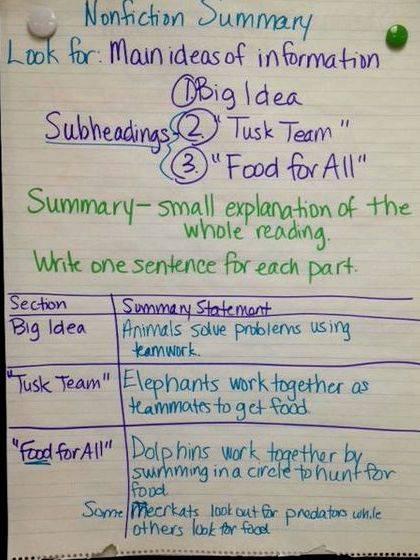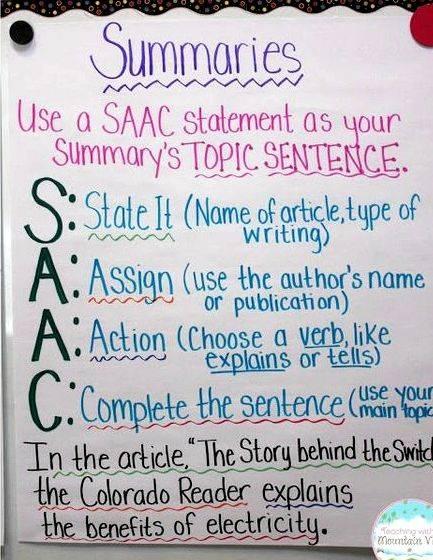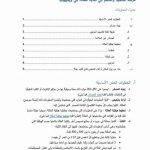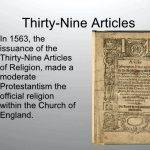Seventh Grade Writing Standards
Writing standards for seventh grade define the knowledge and skills needed for writing proficiency at this grade level. By understanding 7th grade writing standards, parents can be more effective in helping their children meet grade level expectations.
What is 7th Grade Writing?
In Grade 7, students refine and build upon previously learned knowledge and skills in increasingly complex essays. On a regular basis, 7th grade students are expected to produce clear, coherent, and focused essays that are error-free. Seventh grade students are able to select and use different forms of writing for specific purposes such as to inform, persuade, or entertain. Students vary sentence structure and use verb tenses appropriately and consistently such as present, past, future, perfect, and progressive. Seventh grade students edit their writing based on their knowledge of grammar and usage, spelling, punctuation, and other conventions of written language. Seventh-graders use every phase of the writing process and continue to build their knowledge of writing conventions. Students draw data from multiple primary and secondary sources for use in research reports and projects.
The following writing standards represent what states* typically specify as 7th grade benchmarks in writing proficiency:
Grade 7: Writing Process
Seventh grade writing standards focus on the writing process as the primary tool to help students become independent writers. In Grade 7, students are taught to use each phase of the process as follows:
- Prewriting: In grade 7, students generate ideas from multiple sources and use organizational strategies and tools such as technology, graphic organizers, notes, and outlines. Students choose the form of writing that best suits the intended purpose and then make a plan for writing that prioritizes ideas, addresses purpose, audience, main idea, and logical sequence.
- Drafting: In seventh grade, students develop drafts by categorizing ideas, organizing them into paragraphs, and blending paragraphs within larger units of text. Writing exhibits the students’ awareness of the audience and purpose. Essays contain formal introductions, ample supporting evidence (e.g. facts, statistics, examples, anecdotes), and conclusions. Students analyze language techniques of professional authors, including concrete and abstract word choices, and infusing a variety of language techniques to reinforce voice.
- Revising: In seventh grade, students revise selected drafts by elaborating, deleting, combining, and rearranging text. Goals for revision include improving coherence, progression, and the logical support of ideas and content. Grade 7 revision techniques include adding transitional words between sentences to unify important ideas and creating interest by using a variety of sentence structures (including the use of participles and participial phrases at the beginning and end of sentences). Students also evaluate drafts for voice, point of view, and precision of vocabulary. Seventh-graders use creative language devices, and modify word choices using resources and reference materials (e.g. dictionary, thesaurus).
- Editing: Students edit their writing to ensure standard usage, varied sentence structure, and appropriate word choice (e.g. eliminating slang). Seventh-graders proofread for grammar, punctuation, capitalization, and spelling, using reference materials, word processor, and other resources.
- Publishing: Using technology, seventh graders refine and “publish” their work frequently in a format appropriate to audience and purpose (e.g. manuscript, multimedia). Published pieces use appropriate formatting and graphics (e.g. tables, drawings, charts, graphs) when applicable to enhance the appearance of the document.

Use of technology: Seventh grade students use available technology to support aspects of creating, revising, editing, and publishing texts. Students compose documents with appropriate formatting by using word-processing skills and principles of design (e.g. margins, tabs, spacing, columns, page orientation). Students also develop simple databases and spreadsheets to manage information and prepare reports.
Grade 7: Writing Purposes
In seventh grade, students write to express, discover, record, develop, reflect on ideas, and to problem solve, and produce texts of at least 500 to 700 words. Specifically, 7th grade writing standards stipulate that students write in the following forms:
- Narrative: Seventh grade students write fictional or autobiographical narratives that develop a standard plot line (including rising action, conflict, suspense, climax, falling action, and resolution) and point of view. Students use a range of appropriate strategies and specific narrative action (e.g. dialogue, movement, gestures, expressions) and include complex major and minor characters, a definite setting, figurative language, and descriptive words or phrases to enhance style and tone.
- Expository: Seventh grade students write a variety of specialized informational/expository essays (e.g. process, description, explanation, comparison/contrast, problem/solution) that include a thesis statement, supporting details, an organizational structure particular to its type, and introductory, body, and concluding paragraphs. Other 7th grade expository writing applications include technical text (e.g. procedures, instructions, experiments); informal communications (e.g. friendly letters, thank-you notes); formal communications (e.g. business letters, invitations); directions to unfamiliar locations; and recording information related to a topic (e.g. observations, notes, lists, charts, legends).
- Research Reports: In 7th grade, students pose relevant and tightly drawn questions about the topic and write to convey clear and accurate perspectives. Writing supports the main idea or ideas with evidence compiled through the formal research process (e.g. use of a card catalog, Reader’s Guide to Periodical Literature, a computer catalog, magazines, newspapers, dictionaries). Students document reference sources by means of footnotes and a bibliography.
- Persuasive: Students write to influence, such as to persuade, argue, and request. In grade 7, persuasive compositions should state a clear position or perspective in support of a proposition or proposal. Seventh-graders describe the arguments in support of the proposition, employing detailed evidence, as well as anticipate and address reader concerns and counterarguments. In addition to essays, a seventh grade persuasive writing assignment could be an advertisement, speech, or public service announcement. In tackling these writing tasks, students use persuasive techniques such as word choice, repetition, emotional appeal, hyperbole, appeal to authority, celebrity endorsement, rhetorical question, and/or irony.
- Creative: Students write a variety of expressive forms (e.g. realistic fiction, one-act play, suspense story, poetry) that according to the type of writing employed, incorporate figurative language, rhythm, dialogue, characterization, plot, and appropriate format.
- Responses to Literature: Seventh grade students develop an interpretation exhibiting careful reading, understanding, and insight. Writing shows organization around several clear ideas, premises, or images from the literary work. Students justify interpretations through sustained use of examples and textual evidence.
- Summaries: Students write summaries of reading material that include the main ideas and most significant details. The summaries use the student’s own words, except for quotations. The student’s goal is to reflect underlying meaning, not just the superficial details.
In addition, seventh graders choose the appropriate form for their own purpose for writing, including journals, letters, editorials, reviews, poems, memoirs, narratives, and instructions.
Grade 7: Writing Evaluation
Seventh grade students learn to respond constructively to others’ writing and determine if their own writing achieves its purposes. In Grade 7, students also apply criteria to evaluate writing and analyze published examples as models for writing. Writing standards recommend that each student keep and review a collection of his/her own written work to determine its strengths and weaknesses and to set goals as a writer. In addition, seventh grade students evaluate the purposes and effects of film, print, and technology presentations. Students assess how language, medium, and presentation contribute to meaning.
Grade 7: Written English Language Conventions
Students in seventh grade are expected to write with more complex sentences, capitalization, and punctuation. In particular, seventh grade writing standards specify these key markers of proficiency:
Sentence Structure
—Identify types and structure of sentences.
—Write in complete sentences, varying the types such as compound and complex sentences.
—Place modifiers properly and use the active voice.
Grammar
—Correctly employ Standard English usage, including subject-verb agreement and the eight parts of speech (noun, pronoun, verb, adverb, adjective, conjunction, preposition, interjection).
— Identify and use infinitives and participles and make clear references between pronouns
and antecedents.
—Use regular and irregular verb tenses appropriately and consistently such as present, past, future, perfect, and progressive.
—Use adjectives (comparative and superlative forms) and adverbs appropriately to make writing vivid or precise.
—Use prepositional phrases to elaborate written ideas.
—Use conjunctions to connect ideas meaningfully.
—Use regular and irregular plurals correctly.
—Write with increasing accuracy when using pronoun case such as “&”She had the party.”
Punctuation
—Punctuate correctly to clarify and enhance meaning such as using hyphens, semicolons, colons, dashes, brackets, quotation marks, and sentence punctuation.
—Use correct punctuation for clauses such as in dependent and independent clauses and participles and participial phrases.
—Write with increasing accuracy when using apostrophes in contractions (won’t), possessives ( Smith’s) and plural possessives (birds’)
Capitalization
—Capitalize correctly to clarify and enhance meaning.
—Seventh-graders pay particular attention to capitalization of regional names (e.g. East Coast), historical events, and documents.
Spelling
—Use knowledge of spelling rules, orthographic patterns, generalizations, prefixes, suffixes, and roots, including Greek and Latin root words.
—Spell derivatives correctly by applying the spellings of bases and affixes
—Spell frequently misspelled words correctly (e.g. their, they’re, there).
—Understand the influence of other languages and cultures on the spelling of English words.
—Use dictionary, thesaurus, or other resources as necessary and spell accurately in final drafts.
Penmanship
—Write fluidly and legibly in cursive or manuscript as appropriate.
Grade 7: Research and Inquiry
In seventh grade, students select and use reference materials and resources as needed for writing, revising, and editing final drafts. Students learn how to gather information systematically and use writing as a tool for research and inquiry in the following ways:
- Identify topics; Organize prior knowledge about a topic in a variety of ways such as by producing a graphic organizer.
- Ask and evaluate questions for research. Develop ideas leading to inquiry, investigation, and research.
- Take notes from relevant and authoritative sources such as guest speakers, periodicals, and on-line searches.
- Summarize and organize ideas gained from multiple sources in useful ways such as outlines, conceptual maps, learning logs, and timelines.
- Follow accepted formats for writing research. Give credit for both quoted and paraphrased information in a bibliography by using a
consistent and sanctioned format and methodology for citations.
Seventh Grade Writing Tests
In many states, seventh graders take standardized writing assessments, either with pencil and paper or on a computer. While tests vary, students are typically given questions about grammar and mechanics, as well as timed essay-writing exercises in which they must write an essay in response to a writing prompt. On seventh grade essay writing tests, students should demonstrate their ability to produce an effective composition for a specific purpose, as well as their command of the conventions of spelling, capitalization, punctuation, grammar, usage, and sentence structure.
Some states test students’ revising and editing skills with multiple-choice questions on reading passages. Students are asked to indicate how a particular sentence might be corrected or improved or how the organization or development of a paragraph might be strengthened. Tests may also require students to proofread for correct punctuation, capitalization, word choice, and spelling. Another type of question asks students to write a summary statement in response to a reading passage. In addition, 7th grade students are given classroom-based seventh grade writing tests and writing portfolio evaluations.
State writing assessments are correlated to state writing standards. These standards-based tests measure what students know in relation to what they’ve been taught. If students do well on school writing assignments, they should do well on such a test. Educators consider standards-based tests to be the most useful as these tests show how each student is meeting grade-level expectations. These assessments are designed to pinpoint where each student needs improvement and help teachers tailor instruction to fit individual needs. State departments of education often include information on writing standards and writing assessments on their websites, including testing guidelines and sample questions.
Writing Test Preparation
The best writing test preparation in seventh grade is simply encouraging your student to write, raising awareness of the written word, and offering guidance on writing homework. Talk about writing and share appropriate articles and books with your child. Students learn to write effectively when they write more often. Suggest keeping a journal, writing movie reviews for the family, or writing the procedures for using a new piece of equipment, etc. Any writing is valuable practice. By becoming familiar with 7th grade writing standards, parents can offer more constructive homework support. Remember, the best writing help for kids is not to correct their essays, but offer positive feedback that prompts them use the strategies of writing process to revise their own work.
Time4Writing Online Writing Courses Support 7th Grade Writing Standards
Time4Writing is an excellent complement to seventh grade writing curriculum. Developed by classroom teachers, Time4Writing targets the fundamentals of writing. Students build writing skills and deepen their understanding of the writing process by working on standard-based, grade-appropriate writing tasks under the individual guidance of a certified teacher.
Writing on a computer inspires many students, even reluctant writers. Learn more about Time4Writing online courses for seventh grade.
For more information about general learning objectives for seventh grade students including math and language arts, please visit Time4Learning.com.
*K-12 writing standards are defined by each state. Time4Writing relies on a representative sampling of state writing standards, notably from Florida, Texas, and California, as well as on the standards published by nationally recognized education organizations, such as the National Council of Teachers of English and the International Reading Association.





 Article 16 de la constitution dissertation help
Article 16 de la constitution dissertation help Article writing for beginners pdf file
Article writing for beginners pdf file 39 articles of religion summary writing
39 articles of religion summary writing Article writing on save tigers shirt
Article writing on save tigers shirt Writing newsletter articles guidelines for food
Writing newsletter articles guidelines for food






